Nrf2 Plays a Protective Role Against Intravascular Hemolysis-Mediated Acute Kidney Injury
- PMID: 31333462
- PMCID: PMC6619398
- DOI: 10.3389/fphar.2019.00740
Nrf2 Plays a Protective Role Against Intravascular Hemolysis-Mediated Acute Kidney Injury
Abstract
Massive intravascular hemolysis is associated with acute kidney injury (AKI). Nuclear factor erythroid-2-related factor 2 (Nrf2) plays a central role in the defense against oxidative stress by activating the expression of antioxidant proteins. We investigated the role of Nrf2 in intravascular hemolysis and whether Nrf2 activation protected against hemoglobin (Hb)/heme-mediated renal damage in vivo and in vitro. We observed renal Nrf2 activation in human hemolysis and in an experimental model of intravascular hemolysis promoted by phenylhydrazine intraperitoneal injection. In wild-type mice, Hb/heme released from intravascular hemolysis promoted AKI, resulting in decreased renal function, enhanced expression of tubular injury markers (KIM-1 and NGAL), oxidative and endoplasmic reticulum stress (ER), and cell death. These features were more severe in Nrf2-deficient mice, which showed decreased expression of Nrf2-related antioxidant enzymes, including heme oxygenase 1 (HO-1) and ferritin. Nrf2 activation with sulforaphane protected against Hb toxicity in mice and cultured tubular epithelial cells, ameliorating renal function and kidney injury and reducing cell stress and death. Nrf2 genotype or sulforaphane treatment did not influence the severity of hemolysis. In conclusion, our study identifies Nrf2 as a key molecule involved in protection against renal damage associated with hemolysis and opens novel therapeutic approaches to prevent renal damage in patients with severe hemolytic crisis. These findings provide new insights into novel aspects of Hb-mediated renal toxicity and may have important therapeutic implications for intravascular hemolysis-related diseases.
Keywords: Nrf2; heme; hemoglobin; intravascular hemolysis; oxidative stress; sulforaphane; tubular injury.
Figures
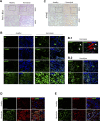

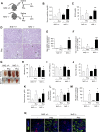
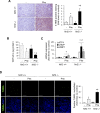
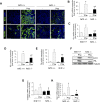
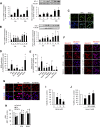
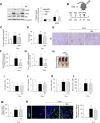
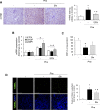
Similar articles
-
New insights into the role of heme oxygenase-1 in acute kidney injury.Kidney Res Clin Pract. 2020 Dec 31;39(4):387-401. doi: 10.23876/j.krcp.20.091. Kidney Res Clin Pract. 2020. PMID: 33184238 Free PMC article. Review.
-
Podocytes are new cellular targets of haemoglobin-mediated renal damage.J Pathol. 2018 Mar;244(3):296-310. doi: 10.1002/path.5011. Epub 2018 Jan 10. J Pathol. 2018. PMID: 29205354
-
Characterization of Renal Injury and Inflammation in an Experimental Model of Intravascular Hemolysis.Front Immunol. 2018 Mar 1;9:179. doi: 10.3389/fimmu.2018.00179. eCollection 2018. Front Immunol. 2018. PMID: 29545789 Free PMC article.
-
Nox4 is involved in acute kidney injury associated to intravascular hemolysis.Free Radic Biol Med. 2024 Nov 20;225:430-444. doi: 10.1016/j.freeradbiomed.2024.10.283. Epub 2024 Oct 15. Free Radic Biol Med. 2024. PMID: 39413979
-
Protective Role of Nrf2 in Renal Disease.Antioxidants (Basel). 2020 Dec 31;10(1):39. doi: 10.3390/antiox10010039. Antioxidants (Basel). 2020. PMID: 33396350 Free PMC article. Review.
Cited by
-
Heme cytotoxicity is the consequence of endoplasmic reticulum stress in atherosclerotic plaque progression.Sci Rep. 2021 May 17;11(1):10435. doi: 10.1038/s41598-021-89713-3. Sci Rep. 2021. PMID: 34001932 Free PMC article.
-
Targeting heme in sickle cell disease: new perspectives on priapism treatment.Front Physiol. 2024 Jul 17;15:1435220. doi: 10.3389/fphys.2024.1435220. eCollection 2024. Front Physiol. 2024. PMID: 39086934 Free PMC article. Review.
-
NRF2 in kidney physiology and disease.Physiol Rep. 2024 Mar;12(5):e15961. doi: 10.14814/phy2.15961. Physiol Rep. 2024. PMID: 38418382 Free PMC article. Review.
-
Ferritins in Kidney Disease.Semin Nephrol. 2020 Mar;40(2):160-172. doi: 10.1016/j.semnephrol.2020.01.007. Semin Nephrol. 2020. PMID: 32303279 Free PMC article. Review.
-
New insights into the role of heme oxygenase-1 in acute kidney injury.Kidney Res Clin Pract. 2020 Dec 31;39(4):387-401. doi: 10.23876/j.krcp.20.091. Kidney Res Clin Pract. 2020. PMID: 33184238 Free PMC article. Review.
References
-
- Balla G., Jacob H. S., Balla J., Rosenberg M., Nath K., Apple F., et al. (1992). Ferritin: a cytoprotective antioxidant strategem of endothelium. J. Biol. Chem. 267 (25), 18148–18153. - PubMed
-
- Ballarin J., Arce Y., Torra Balcells R., Diaz Encarnacion M., Manzarbeitia F., Ortiz A., et al. (2011). Acute renal failure associated to paroxysmal nocturnal haemoglobinuria leads to intratubular haemosiderin accumulation and CD163 expression. Nephrol. Dial. Transplant. 26 (10), 3408–3411. 10.1093/ndt/gfr391 - DOI - PubMed

